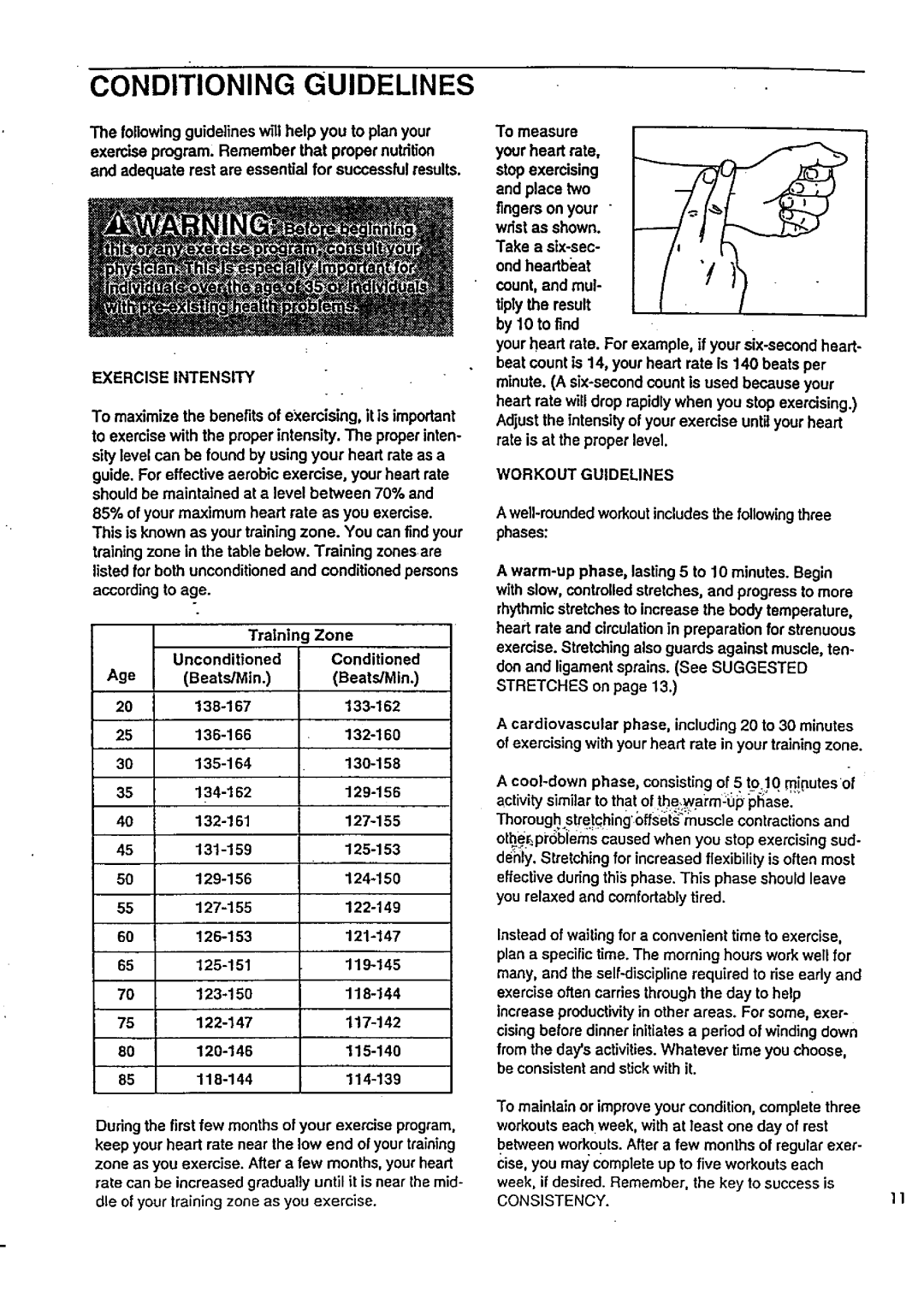
CONDITIONING GUIDELINES
The following guidelines will help you to plan your exercise program. Remember that proper nutrition end adequate rest are essential for successful results.
EXERClSEINTENSITY
To maximize the benefits of exercising, it is important to exercise with the proper intensity. The proper inten- sity level can be found by using your heart rate as a guide. For effective aerobic exercise, your heart rate should be maintained at a level between 70% and 85% of your maximum heart rate as you exercise. This is known as your training zone. You can find your training zone in the table below. Training zones are listed for both unconditioned and conditioned persons according to age.
| Training | Zone |
| Unconditioned | Conditioned |
Age | (Beats/Min.) | (Beats/Min.) |
20 | ||
25 | ||
30 | ||
35 | ||
40 | ||
45 | ||
50 | ||
55 | ||
60 | ||
65 | ||
70 | ||
75 | ||
80 | ||
85 |
During the first few months of your exercise program, keep your heart rate near the low end of your training zone as you exercise. After a few months, your heart rate can be increased gradually until it is near the mid- dle of your training zone as you exercise.
To measure your heart rate, stop exercising and place two fingers on your " wrist as shown. Take a
your heart rate. For example, if your
WORKOUT GUIDELINES
A
A
A cardiovascular phase, including 20 to 30 minutes of exercising with your heart rate in your training zone.
A
Instead of waiting for a convenient time to exercise, plan a specific time. The morning hours work well for many, and the
from the day'sactivities.Whatever time you choose, be consistent and stickwith it.
To maintain or improve your condition, complete three workouts each week, with at least one day of rest between workoiJts.After a few months of regular exer- cise, you may complete up to five workouts each week, if desired. Remember, the key to success is
CONSISTENCY.]1
